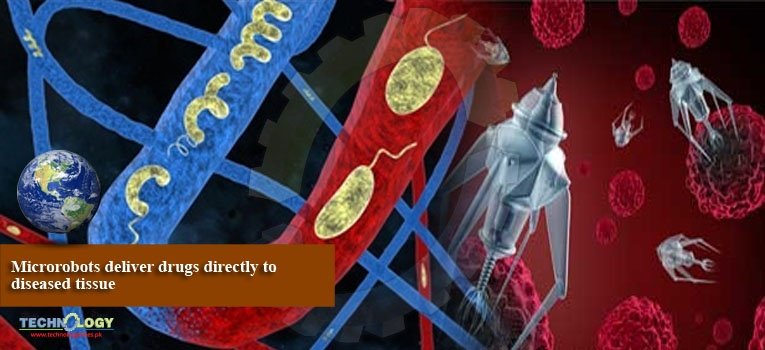Microrobots to deliver drugs to our body have been previously talked about, however, scientists have now designed tiny, origami-styled robots, inspired from bacteria, that can adapt to their surroundings to deliver drugs.

Researchers from EPFL and ETH Zurich have taken inspiration from bacteria to come up with smart, biocompatible microrobots that are immensely flexible and can deliver drugs directly to the diseased tissue.
Made up of hydrogel nanocomposites containing magnetic nanoparticles, these robots are able to swim through fluids in our body and change their shape whenever need. Hence, they can pass through narrow blood vessels and complex systems without compromising on their speed or maneuverability.
The researchers describe the method for ‘programming’ the robot’s shape so that it can easily travel through dense, vicious, or rapidly moving fluids. The robots are made using an origami-based folding method, embedded with electronic systems.
Lead scientist Selman Sakar said, “Our robots have a special composition and structure that allow them to adapt to the characteristics of the fluid they are moving through.
For instance, if they encounter a change in viscosity or osmotic concentration, they modify their shape to maintain their speed and maneuverability without losing control of the direction of motion.”
The deformations can be programmed in advance to maximize the robot’s performance without needing any sensors. They can either be controlled via an electromagnetic field, or left of navigate on their own through cavities by utilizing fluid flow. In any way, these microrobots can automatically take up the most efficient shape.
Another lead author Bradley Nelson said, “Nature has evolved a multitude of microorganisms that change shape as their environmental conditions change. This basic principle inspired our microrobot design.”
What’s more is that these robots can be easily manufactured at low costs. Currently, the team is working to enhance the robot’s performance for swimming through complex human body liquids.